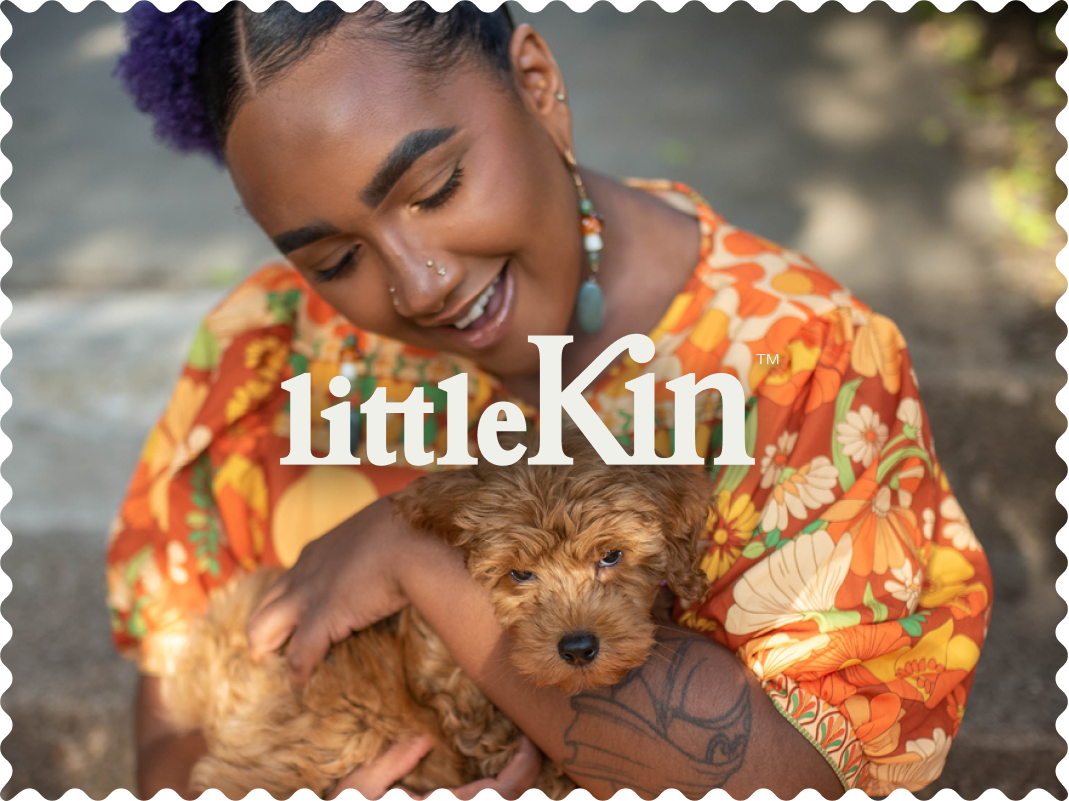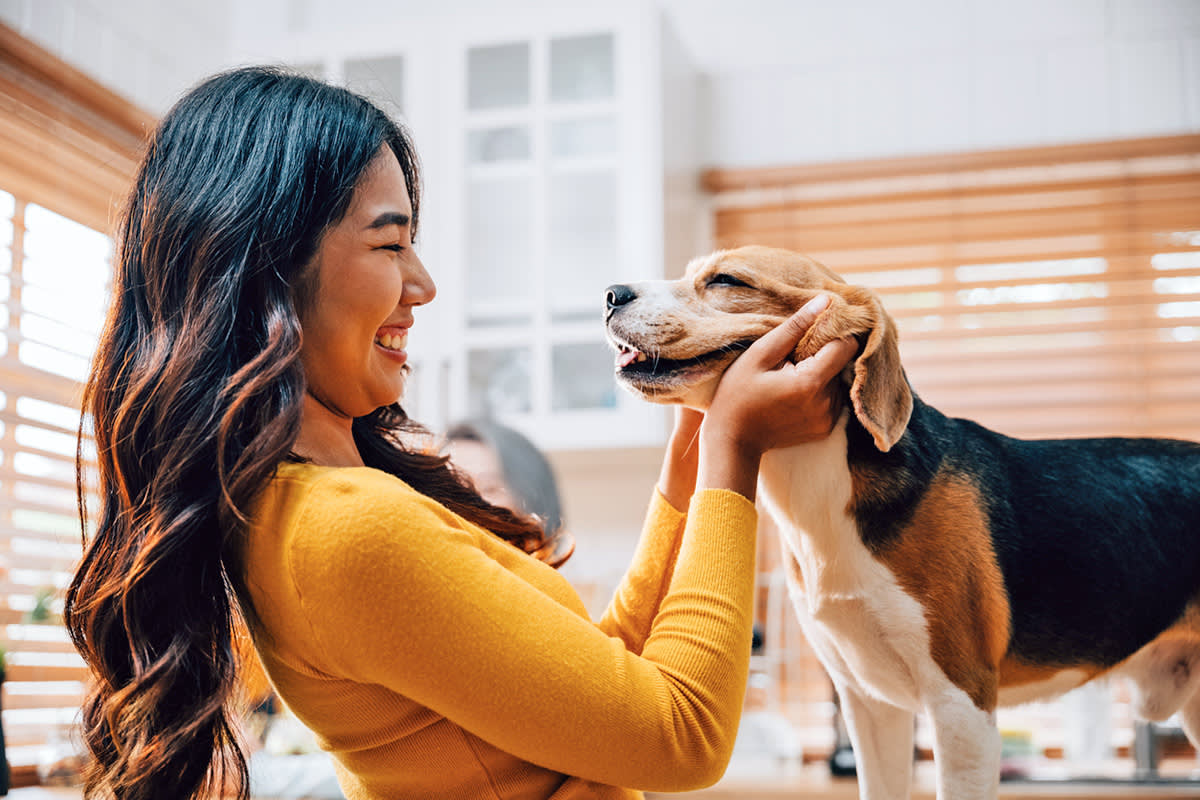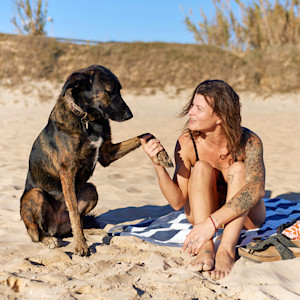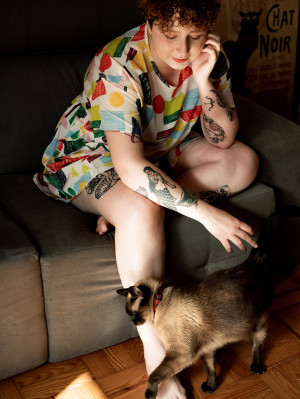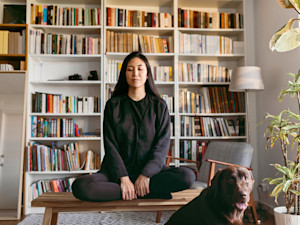10 Signs Your Dog Trusts You
Your pup will act this way when they feel safe and secure.
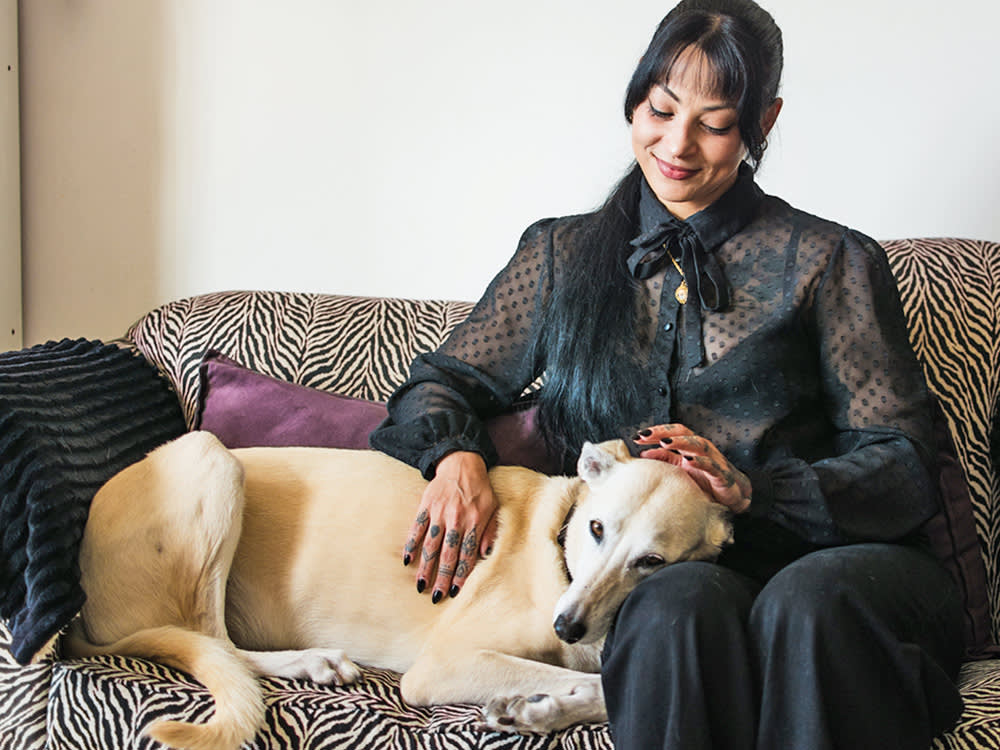
Share Article
As a rescue dog mom of two, I’ve spent a borderline-absurd amount of time thinking about trust. When I brought each of my dogs home, I wanted to create a warm, safe environment — so I scoured the doggie-parenting books, stocked up on fuzzy beds and enrichment toys, and loaded up on training treats. But every now and again, I’ll catch a side eye from one of my pooches and find myself swimming in self-doubt. Do they really feel at home with me, I wonder, or do they just put up with me because they like the luxurious accommodations?
Insecurity can creep into any relationship, but with human companions, we can at least broach our worries in a direct conversation over brunch (preferably after a mimosa or two). With dogs, it’s not so simple.
“Dogs don’t experience the world through the same cognitive and emotional framework that humans do,” says Brie Blakeman certified trainer and founder and CEO of Noble Woof Dog Trainingopens in new tab. “When we describe a dog as ‘trusting’ us, we’re using anthropomorphic language to interpret observable behaviors through a human lens.”
In other words, your dog isn’t thinking about you the way you think they are. But really, when most of us ask if our dogs “trust” us, we just want to know that they feel comfortable, secure, and happy in our presence. And that, at least, is something we can confirm based on how they act.

Signs your dog trusts you
They use calm body language.
You can tell a lot about how a dog is feeling by how they carry their body.
For instance, Kristine Adams, dog trainer and behavior consultant and owner of Woof Wisdomopens in new tab, asks, “Is their overall body loose or tight? Do they wiggle or remain stiff?” The former is a sign of comfort; the latter is a sign your dog might be feeling tense.
Relaxed ears are good — especially if, as Blakeman notes, they continue to move easily in response to sounds. Other signs your dog is feeling cool as a cucumber include a relaxed face; loose lips, perhaps with the tongue hanging out; a natural-looking tail position with “loose, flowing movement”; a level head; and a “smooth gait with elastic, bouncy steps.”
In contrast, a dog who’s feeling uncomfortable might appear tense, with pricked-up or pinned-back ears and wide eyes that show the whites. They might engage in displacement behaviors, like licking their lips or yawning, or they might pace around. Their mouth might be closed tightly, with corners pulled back, and their tail might be tucked between their legs or wagging high and rigid, rather than loose and playful. They might seem hypervigilant, or even growl, snarl, or bark.
They look at you fondly.
If you’re still wondering how your pup is feeling, take a look at their beautiful peepers. Their eyes should be almond-shaped, Blakeman says, with normally dilated pupils.
“With humans they feel comfortable around, dogs often display relaxed eye contact that is brief and soft rather than fixed or avoidant,” Blakeman says. “Their eyes may appear to ‘smile’ with [a] slightly narrowed shape and relaxed surrounding muscles.��”
Also, if their eyes happen to have little hearts floating around in them, that never hurts.
They have no bad hair days (not what you think).
No, we’re not talking about frizz. Instead, look at your dog’s back and neck for raised hackles. If they’re feeling really uncomfortable, those stiff hairs on their spines will stand up straight. A smooth coat might not automatically mean smooth sailing, but it’s a start.
They let you touch them.
A comfortable dog should remain relaxed or even lean into gentle handling, Blakeman says. On the other hand, if your dog’s general response to affection reminds you of Kuzco in The Emperor’s New Groove — “No touchie!” — you might have a problem.
It can help to examine how your dog responds to “less-fun, but necessary tasks,” Adams adds. For example, “can you put on their harness, bathe them, clean their paws, trim their nails, or provide care without holding them down or causing undue stress?” If so, you’re probably doing just fine.
Their breathing is relaxed and easy.
Just like people, dogs’ breathing can change when they’re nervous. They might begin panting, even if the temperature is cool. A dog that’s feeling relaxed should display “regular and even” breathing, Blakeman says, panting only if it makes sense for the climate (or, perhaps, they’ve been active and are cooling down).
They act playful.
If your dog is engaging you in an afternoon frolic, you can assume they consider you part of the pack.
Dogs play differently with humans than with other dogs, Blakeman says. You can look for “distinctive pawing motions, head tilts, and specific vocalizations calibrated for human attention.” Dogs even move their tails differently when playing with people: “The wag may be broader and more exaggerated with humans than the more subtle, nuanced tail positions used with other dogs.” Cute!
And of course, playful dogs will often roll over and show off their bellies to humans they feel comfortable around — “a behavior that shows significant vulnerability.”
They eat and sleep around you.
Resting by your side — especially in deep sleep — is a “vulnerable behavior,” Adams says, and therefore a good sign. Eating, meanwhile, can be a little more complicated.
As Adams puts it, “A dog who eats in your presence or takes treats from you is likely feeling safe.” That said, “Some dogs are stress eaters (just like some of us!), so it’s one piece of a bigger puzzle.”
They like to hang out around you.
Proximity can be a solid indicator of comfort, Adams says, but as with many signals, there’s some nuance.
“Some dogs use proximity to create space — like rushing toward a person or dog to make them back off,” she says. “In the child-dog world, this is sometimes called the ‘kiss and dismiss’ phenomenon. Dogs may also lean into or jump on people not from excitement, but as a way to gain space.”
At the same time, Adams points out, “some dogs who love you may still prefer distance. One of my own dogs wants to be in every room with me — but always stays about three feet away. My other dog, however, wishes she could live in my pocket.”
If you’re trying to figure out what your dog is trying to tell you, try referring back to their body language.
They follow you around.
This one also requires close observation. If your dog sticks to you like glue with a cheerful attitude, Adams says, you can consider it “a strong affiliative behavior.” But if they’re following you around like a cartoon watchdog, closely monitoring your every move, they probably feel unsure. To find out which it is, Adams says, “Always look at the full picture” (aka body language).
Make you their safe place.
At the end of the day, the best way to know if your dog feels safe and comfortable around you is if they rely on you to provide safety and comfort. For instance, Adams asks, “When startled or upset, do they look to you and move toward you, or do they retreat and seek distance?” If they’re running toward you and not away from you, that’s a pretty solid answer.
What to do if your dog doesn’t trust you
Move slowly.
Dogs might not “trust” the way humans do, but just like people, their sense of security can be earned (and lost) over time.
To avoid scaring your dog, meet them where they are. “Don’t force contact,” Adams says. “Slow everything down. Give them choice and agency in as many situations as possible.”
If you’re just starting to build trust, don’t engage your dog. Sit in the room without looking at them or interacting. Let them come to you. “When they do approach,” Blakeman says, “resist reaching or touching — let them set the pace and nature of physical contact.”
Blakeman also suggests positioning yourself sideways, rather than facing an anxious dog head-on — which they might read as confrontational. “Avoid hovering over them or making rapid movements that might trigger startle responses,” she says. “Lower your body position to appear less physically imposing.”
Keep things predictable.
Routines are key to creating a predictable environment, Blakeman says. Keep feeding, sleeping, and exercise times regular to create stability. Use positive reinforcement to reward desired behaviors, and use consistent verbal cues to avoid confusion or frustration.
“Quality time together creates positive associations,” Blakeman adds. “Engage in activities your dog genuinely enjoys rather than those you think they should appreciate.”
Do the “treat and retreat.”
A more formal way to create positive associations, Blakeman says, is dog traineropens in new tab Suzanne Clothier’s “Treat and Retreat” protocol.
Clear an area large enough for you and your dog to have a “safe zone” between you and a “safer zone” behind where your dog is sitting. Then, gather high-quality treats like pieces of cheese, cut-up hotdogs, or shredded chicken. To start the game, throw a treat at your dog’s feet before tossing two more into the “safer zone” behind them, allowing them to “retreat” and fetch them.
Watch your dog’s behavior as they retrieve the treats — look for smooth movements without hesitation or concern about what you might be doing behind their back. Repeat as necessary until your dog seems relaxed grabbing treats from behind them.
Then, start throwing two treats at your dog’s feet and one into the “safe zone” between you, and repeat as necessary to build their confidence. Limit sessions to five to seven minutes apiece, with periodic resets in between and a decompression activity afterwards.
Once your dog looks secure approaching the treats between you, you can start engaging in eye contact, talking to them, turning toward them, or even standing and moving. If none of these tips seems to do the trick, it might be time to consult a trainer or veterinarian. After all, a dog’s life is too short to waste feeling anxious and unsafe — especially with you, the person who wants to be their best friend.

Laura Bradley
Laura is a New York-based experienced writer and mom of two rescue pups. Her work has appeared in Slate, Vanity Fair, Daily Beast, The Washington Post, The Atlantic, Yahoo! News, Vulture, Grazia Magazine, and more. When she is not writing or walking the pooches, you will probably find her in the community garden.
Related articles
![Woman talking to her dog on the beach.]()
Do Our Dogs Actually Like the Silly Voices We Make Up for Them?
You are not the only one who speaks for your pup.
![a tattooed person with curly red hair on a couch pets a brown and black cat]()
Your Cat Can Tell When You’re Stressed, Study Says
It’s all in their noses.
Why Do Dogs Always Take Up the Entire Bed When They Sleep With You?
You're just trying to get some Zzzs.
![Woman meditating with her chocolate lab in the living room.]()
Why You Should Do Breathwork With Your Dog—Really
It might sound woo-woo, but it can benefit you both.
What’s Your Dog-Parenting Style?
Are you a helicopter? A minimalist? Maybe a gentle parent? Find out where you fall when it comes to raising your pup.
